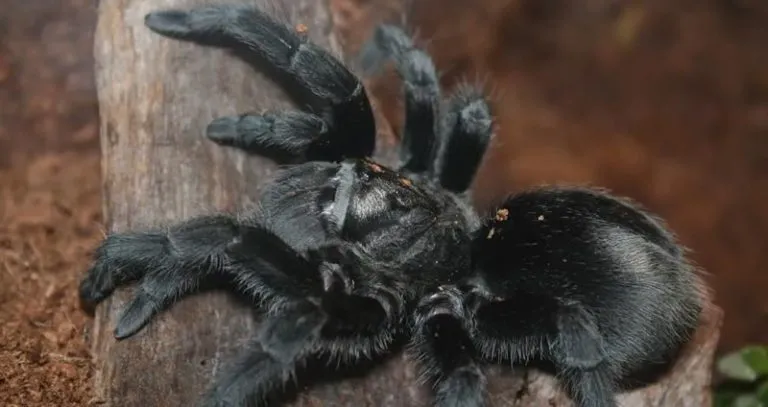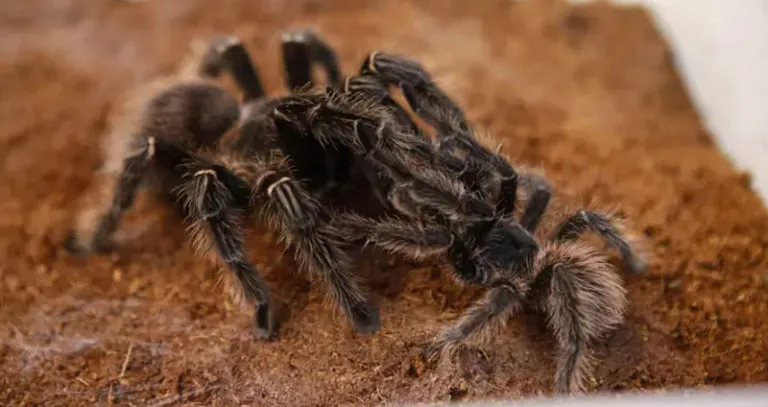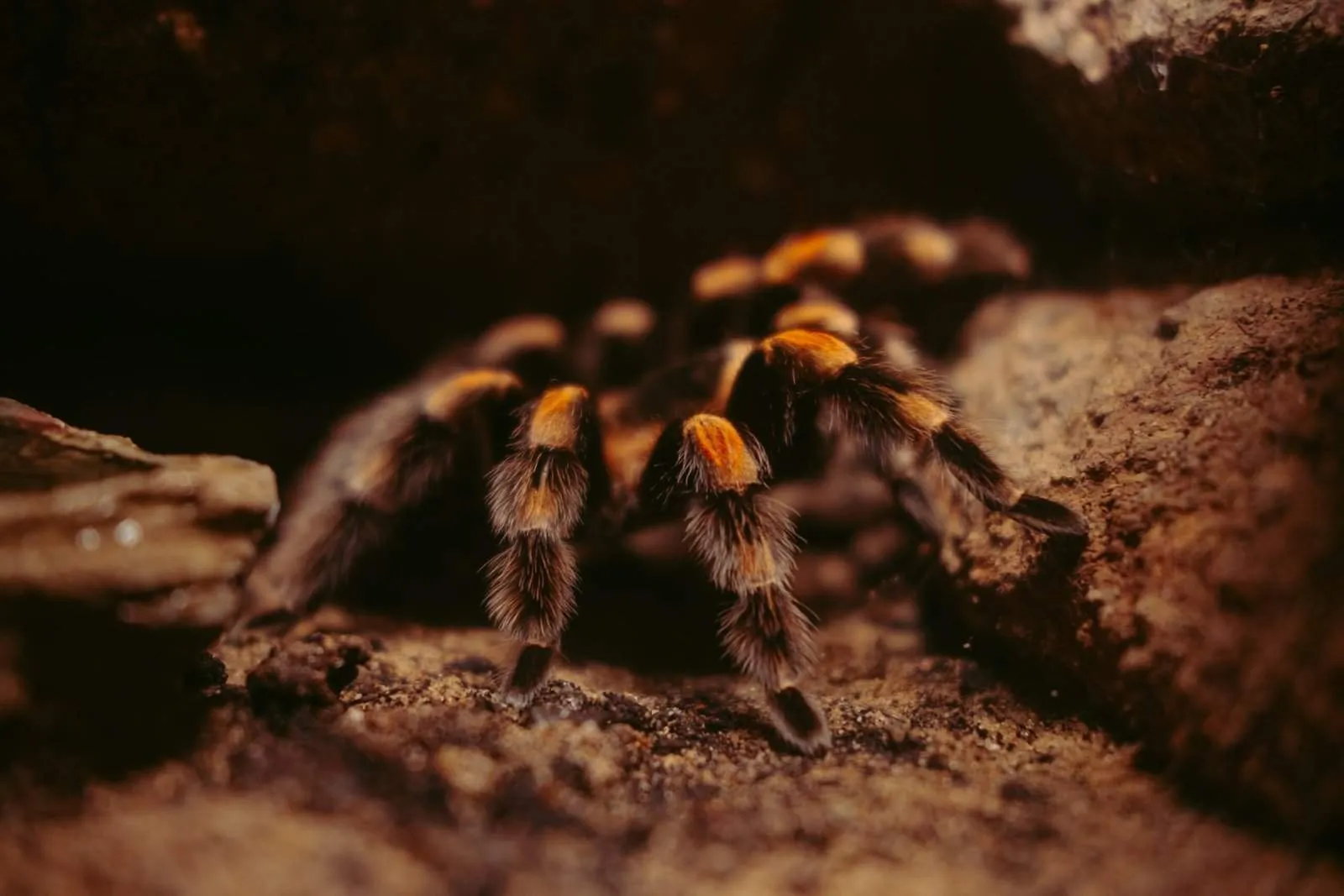What Impacts Tarantula Lifespan?
The captivating world of tarantulas often sparks curiosity about their longevity. Understanding the factors influencing a tarantula’s lifespan is essential for responsible pet ownership and appreciation of these fascinating arachnids. Several key elements come into play, shaping how long these creatures grace our lives. The most significant influence stems from a combination of gender, species, habitat, and diet. Each of these plays a vital role in determining the overall health and longevity of a tarantula in captivity. Proper care is also another critical part of a tarantula’s life, providing a stable environment and proper nutrition will not only ensure its survival but will also affect how long it will live, making sure these creatures have a good quality of life.
Gender and Tarantula Lifespan
One of the most striking differences in tarantula lifespans lies in their gender. Males and females exhibit drastically different life expectancies, a phenomenon linked to their biological roles in reproduction. Males, often reaching sexual maturity sooner, typically have a shorter lifespan compared to their female counterparts. This disparity underscores the impact of reproductive strategies on their longevity. This difference in lifespan emphasizes the importance of understanding these biological differences when considering a tarantula as a pet, as the commitment to care can vary significantly based on the gender of the spider. Both male and female tarantulas have unique needs and require specific care that will allow them to live a long and healthy life.
Male Tarantulas

Male tarantulas, after reaching maturity, often live for a relatively short period, typically ranging from a few months to a couple of years. Their primary purpose becomes finding a mate, which consumes much of their energy and resources. The process of mating, including the journey to find a female and the subsequent encounter, can be perilous, further contributing to their shorter lifespans. This natural cycle underscores the biological realities shaping their existence. Caring for a male tarantula involves recognizing this shortened lifespan and providing the best possible conditions during their time. This includes appropriate housing, feeding, and environmental control to ensure they remain healthy for as long as possible.
Female Tarantulas
Female tarantulas, in contrast, can live for many years, often exceeding a decade, with some species living for over 20 years in captivity. This extended lifespan is primarily due to their reproductive capacity and the energy investment in egg production. Their longer lifespans make them a more extended commitment for pet owners, requiring long-term care and attention. The care of female tarantulas involves providing a stable, enriching environment that supports their health and well-being throughout their lives. This includes proper nutrition, a suitable habitat, and regular monitoring for any signs of illness or distress. The key to a long and fulfilling life for a female tarantula is consistent, attentive care.
Species and Tarantula Lifespan
The specific species of a tarantula also significantly influences its lifespan. Different species have evolved distinct life histories, impacting how long they live. Some species are naturally longer-lived, while others have shorter lifespans. This variation is a fundamental aspect of their biology, shaped by environmental factors, genetic makeup, and reproductive strategies. Understanding the lifespan of a specific tarantula species is vital for providing appropriate care. This knowledge informs the setup of their habitat, the dietary needs, and the expectations of their care. Researching the specific requirements of the species is a crucial step in becoming a responsible tarantula owner, ensuring the animal can live a life of its best potential.
Size Matters Tarantula Lifespan

Generally, larger tarantula species tend to live longer than smaller ones. This correlation is often linked to their slower metabolic rates and growth patterns. Larger tarantulas, like the Goliath Birdeater, can have lifespans exceeding 20 years for females. In contrast, smaller species might have shorter lifespans, perhaps only a few years. Size is a rough indicator, with the care, diet, and habitat also having a significant impact. The care should be tailored to the species to make sure your tarantula has a good quality of life. This is crucial for their long-term health and well-being. Providing the appropriate environment will support their specific needs, allowing them to live as long as possible.
Habitat and Tarantula Lifespan
The habitat in which a tarantula lives profoundly affects its lifespan. In captivity, the environment must mimic the natural habitat as closely as possible to ensure the tarantula thrives. This includes temperature, humidity, substrate, and appropriate hiding places. A well-maintained habitat reduces stress and prevents illness, increasing the tarantula’s lifespan. The setup should provide a secure and comfortable environment that will help the tarantula to feel safe and secure. It should also have a comfortable temperature range, which will help the spider regulate its metabolism and overall health. Keeping the habitat clean is important to avoid diseases and parasites that can impact their lifespan. Creating the optimal habitat can make the spider feel at home and healthy.
Captivity vs Wild Lifespan
Tarantulas in captivity often have a longer lifespan than those in the wild. This advantage is mainly due to the consistent environment, protection from predators, and readily available food sources. In the wild, tarantulas face various threats, including predation, environmental extremes, and scarcity of food, all of which can shorten their lives. The controlled environment in captivity allows for optimal conditions, minimizing stress and maximizing their potential lifespan. However, the lifespan in captivity is directly tied to the quality of care provided. Pet owners must commit to responsible care practices to provide the benefits of captivity.
Optimal Tarantula Habitat

An optimal habitat should replicate the tarantula’s natural environment. This includes appropriate temperature gradients, humidity levels, and suitable substrate. The enclosure should be of a proper size. It should also have hiding places like cork bark or artificial plants to help the spider feel secure and minimize stress. Proper ventilation prevents the buildup of harmful bacteria and other pathogens. Careful attention to detail will create a healthy environment for the spider to thrive. The setup should provide ample space for movement, appropriate substrate for burrowing (if the species requires it), and an accessible water source. The habitat’s design is critical to the tarantula’s overall health and happiness, directly impacting its lifespan.
Diet and Tarantula Lifespan
A tarantula’s diet is crucial to its lifespan. A balanced diet consisting of appropriately sized insects is essential for maintaining health and providing the necessary nutrients. Overfeeding can lead to health issues, whereas underfeeding can result in malnourishment and shorter lifespans. The type of insects given matters, with a variety of prey, such as crickets, mealworms, and roaches, offering a more complete nutritional profile. The diet should be tailored to the tarantula’s growth stage and species. Providing a consistent feeding schedule helps maintain the tarantula’s health and prevents stress. The right diet will contribute to a longer, healthier life for your pet tarantula.
Feeding Habits for Longevity
Feeding habits are a critical aspect of ensuring a long lifespan. Feed the tarantula appropriately sized insects, avoiding both overfeeding and underfeeding. Adjust the frequency based on the tarantula’s age, growth rate, and species. A juvenile tarantula will need more frequent feedings than a fully grown adult. Provide access to fresh water at all times. Remove uneaten food promptly to prevent the growth of mold and bacteria in the enclosure. Providing a well-balanced diet is vital to extend the spider’s life. This includes a variety of insects. Avoid feeding wild-caught insects, as they can carry parasites or pesticides. These feeding habits will help the tarantula stay healthy and live longer.
Health and Tarantula Lifespan

Maintaining a tarantula’s health is essential for extending its lifespan. Regular health checks and preventative care can catch potential issues early. Proper hydration, a clean habitat, and stress-free living conditions are all critical components of health. Monitor for signs of illness or distress, such as loss of appetite, unusual behavior, or changes in appearance. The owner should also provide adequate humidity to help the tarantula with the molting process and to help them stay healthy. Handling should be minimized to reduce stress. A proactive approach to health care maximizes the chances of a long, healthy life. By creating the right conditions, your tarantula will thrive for years to come.
Common Tarantula Diseases
Tarantulas, like all living creatures, are susceptible to diseases. Common ailments include fungal infections, parasitic infestations, and bacterial infections. Preventative measures, such as maintaining a clean habitat and providing proper ventilation, can minimize the risk of these diseases. Knowing the signs of illness is crucial for early intervention. Symptoms include lethargy, loss of appetite, or unusual behavior. If you notice any of these symptoms, consult with a veterinarian specializing in exotic animals. Addressing these problems promptly can prevent them from shortening the tarantula’s life and ensuring its health and well-being.
How to Extend Tarantula Lifespan
Extending a tarantula’s lifespan is achievable through diligent care and attention to its needs. Provide a suitable habitat. Offer a balanced diet of appropriately sized insects. Maintain optimal temperature and humidity levels for the tarantula’s species. Regular health checks can catch any potential problems early, allowing for timely intervention. Minimize stress by providing hiding places and avoiding excessive handling. By understanding the factors impacting a tarantula’s lifespan and implementing these practices, pet owners can significantly improve the quality and duration of their tarantula’s life. These steps will help the tarantula thrive, making their life as long and healthy as possible.
